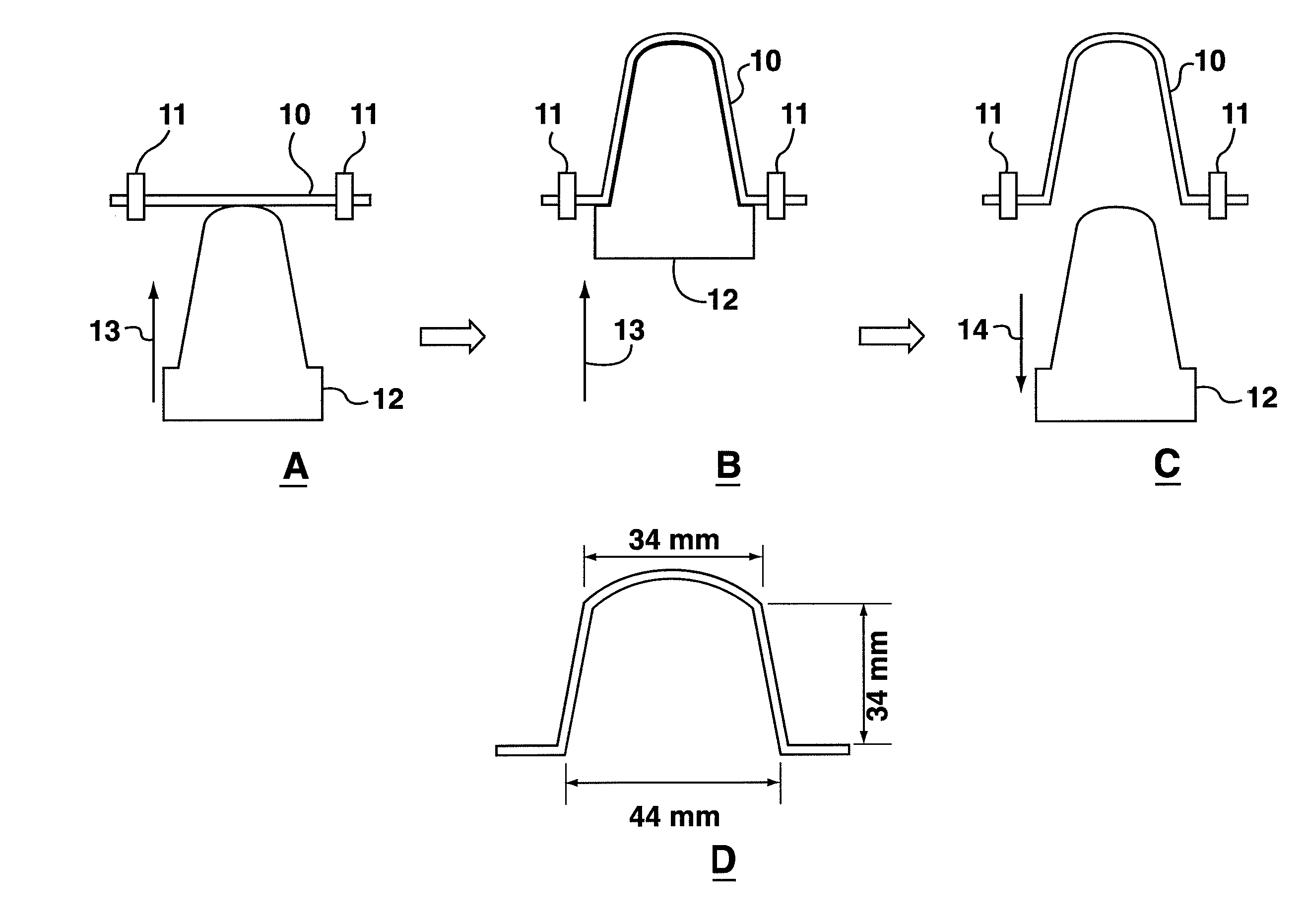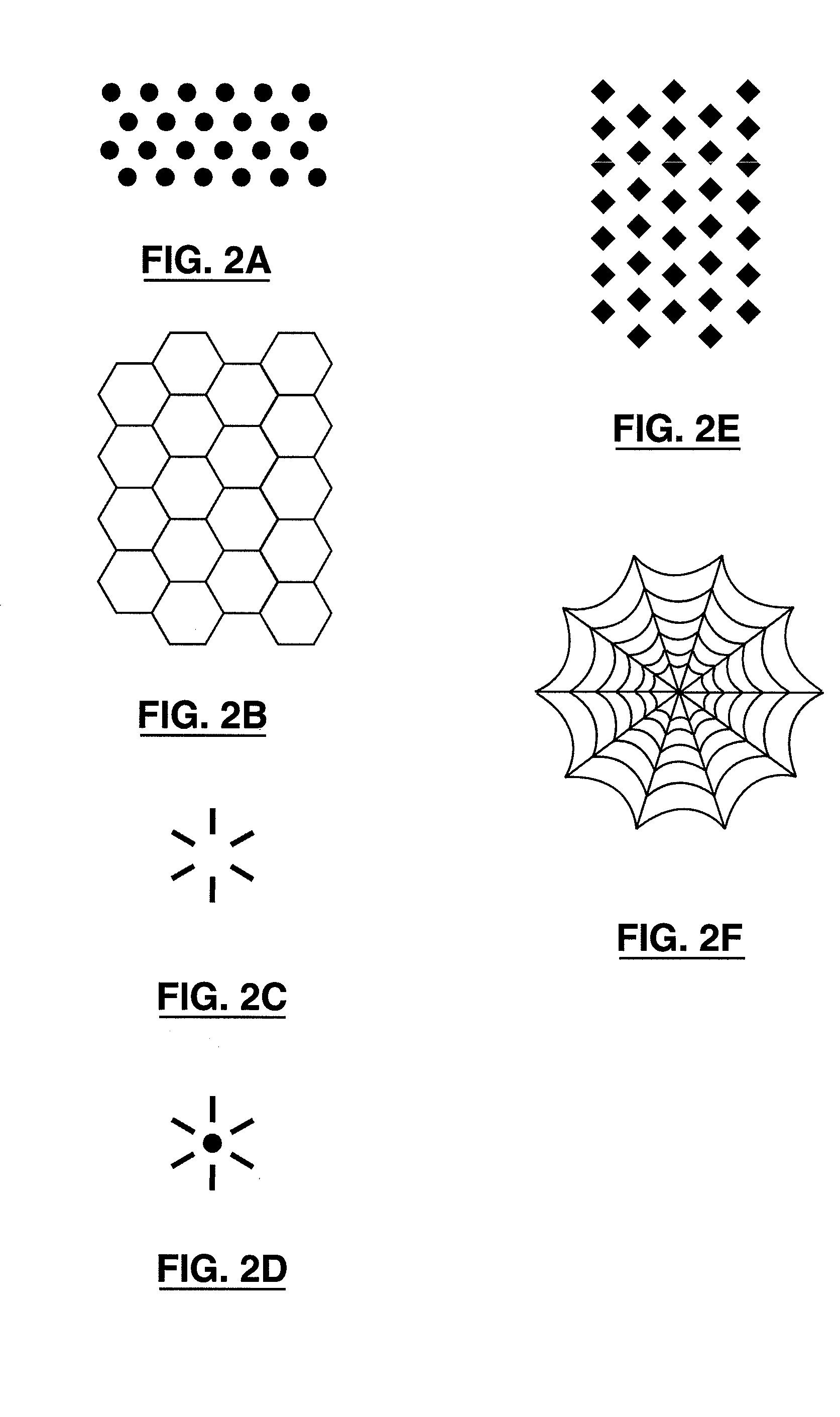Process For Forming A Three-Dimensional Non-Woven Structure
- Summary
- Abstract
- Description
- Claims
- Application Information
AI Technical Summary
Benefits of technology
Problems solved by technology
Method used
Image
Examples
Embodiment Construction
[0020]The following is a detailed description of the invention.
Definitions
[0021]The term “melt index” as used herein refers to a common measurement used to characterize thermoplastic polymers. It is essentially an indirect, and inversely proportional, measure of the viscosity of the polymer when molten. One measures the mass of polymer melt which will flow through an orifice in a given amount of time under defined conditions of temperature, pressure, and geometry. The larger the melt index value, the lower is its viscosity, and therefore, the average molecular weight of the polymer is lower (although other factors, such as processing and additives, also play a role). Higher molecular weight polymers will generally be more viscous and less will flow under the same conditions so the melt index will be a smaller number. The melt index is typically expressed in terms of grams of polymer which flow out in a ten minute period, thus g / 10 min or dg / min.
[0022]Different polymer types often re...
PUM
| Property | Measurement | Unit |
|---|---|---|
| Fraction | aaaaa | aaaaa |
| Fraction | aaaaa | aaaaa |
| Fraction | aaaaa | aaaaa |
Abstract
Description
Claims
Application Information
 Login to View More
Login to View More - R&D Engineer
- R&D Manager
- IP Professional
- Industry Leading Data Capabilities
- Powerful AI technology
- Patent DNA Extraction
Browse by: Latest US Patents, China's latest patents, Technical Efficacy Thesaurus, Application Domain, Technology Topic, Popular Technical Reports.
© 2024 PatSnap. All rights reserved.Legal|Privacy policy|Modern Slavery Act Transparency Statement|Sitemap|About US| Contact US: help@patsnap.com










